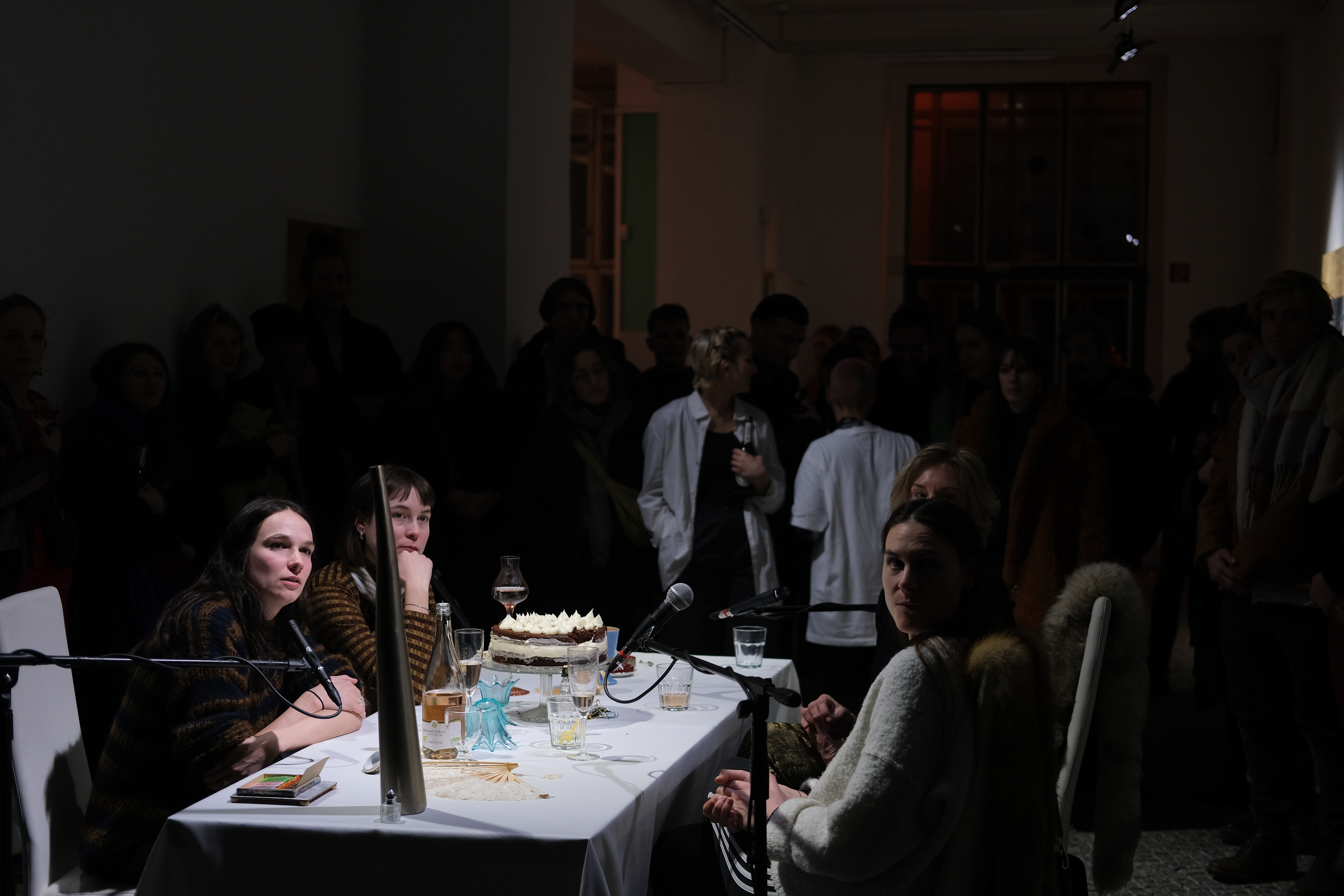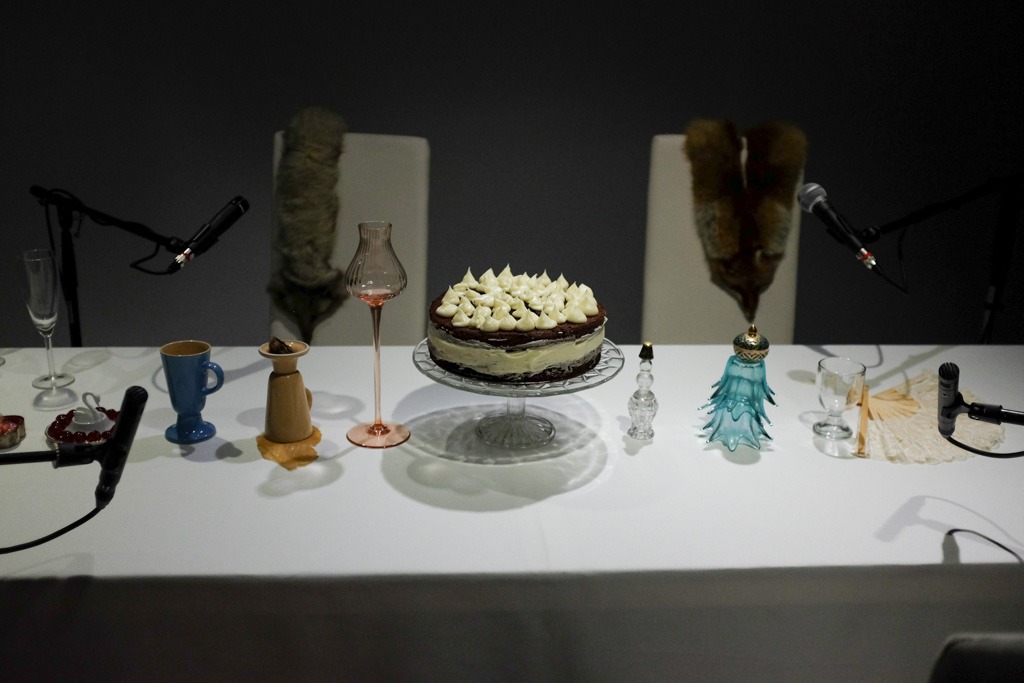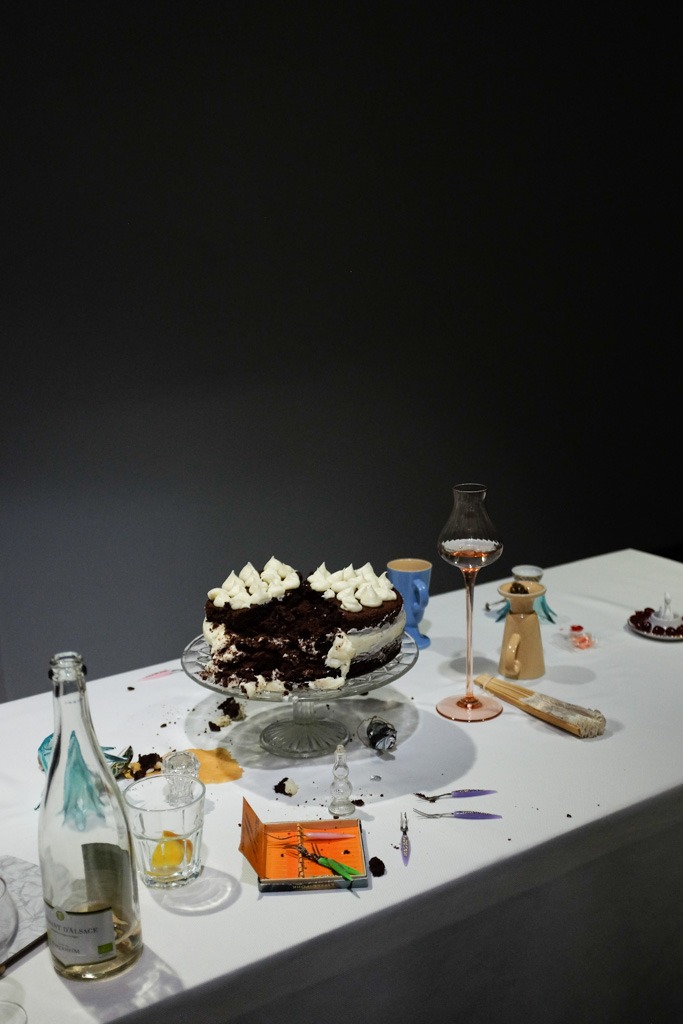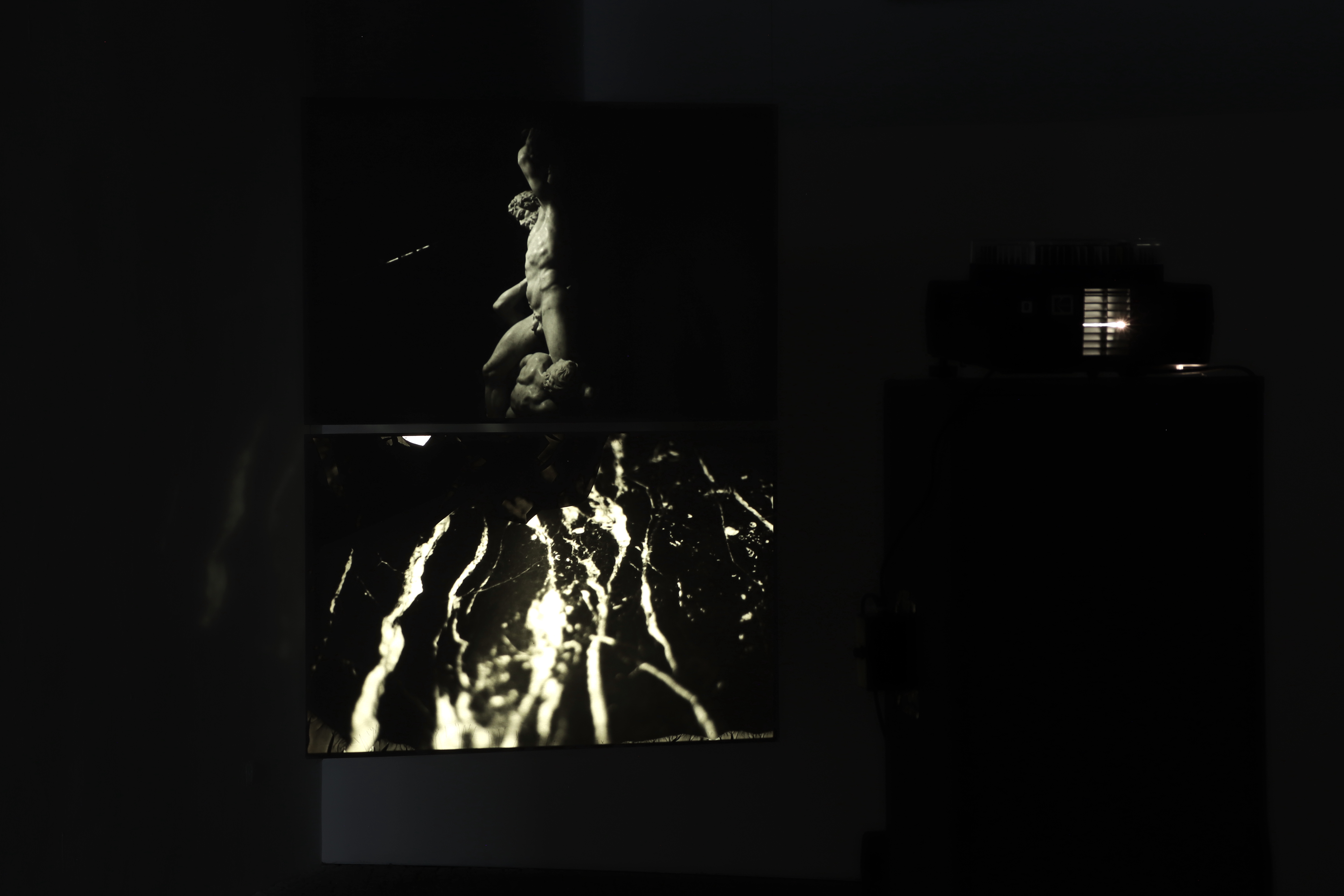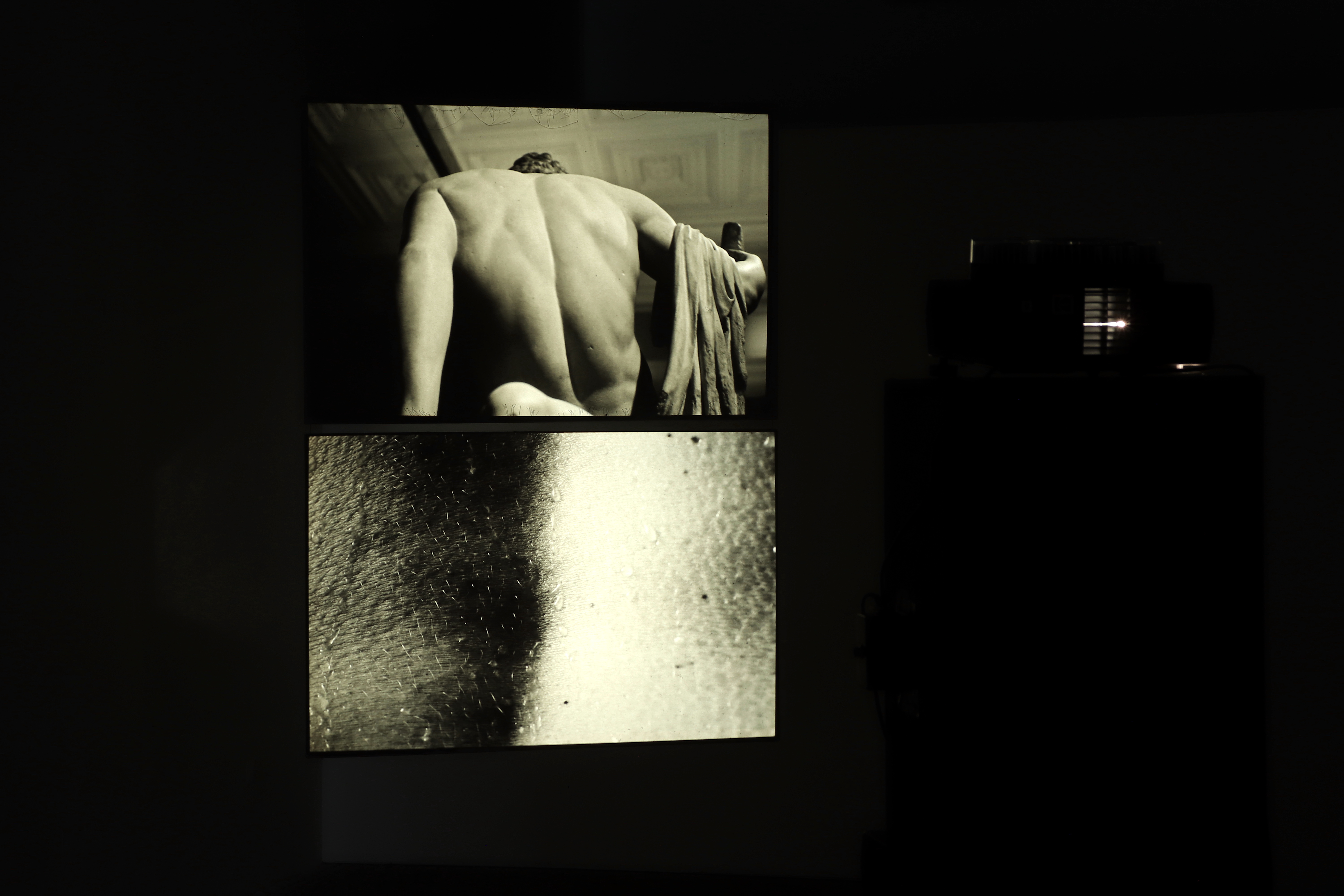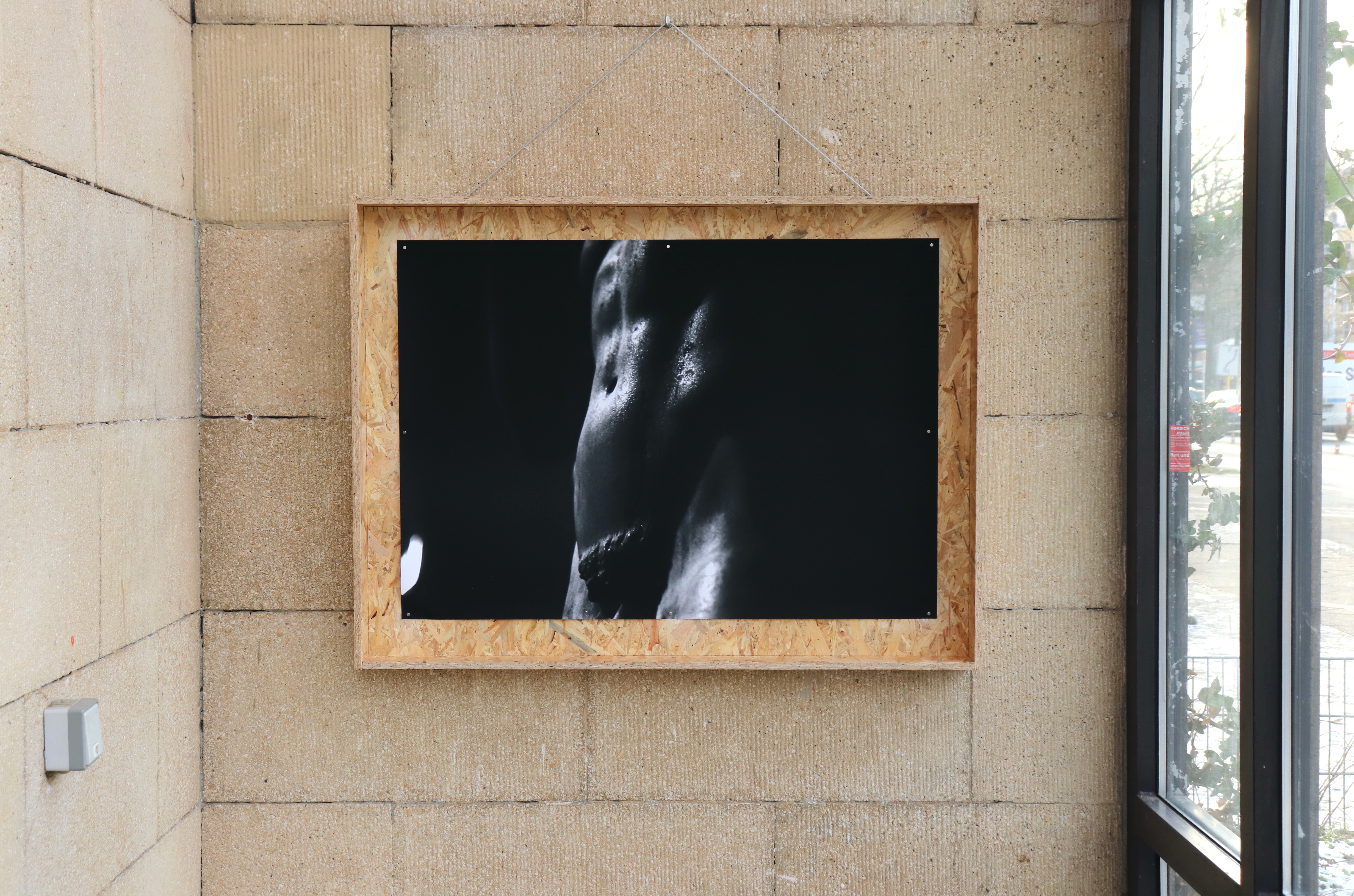Ben Caro, Kat Cutler-MacKenzie, Muriel Lisk-McIntyre
Bodies of Love
10th to the 25th February 2023
Bodies of Love
Opening: 10th February 2023 from 7pm to 11pm, performance at 8:30pm.
Show running from 11th to the 25th February 2023.
Open from Thursday to Saturday 3pm to 7pm.
Bodies of Love
In our current world of crisis and conflicts, with increased individualism and intense consumption, love in the 21st century is seriously threatened and regularly challenged…seismic sociological changes concerning sexuality, marriage and intimacy, alongside developments in gender issues, [have] affected the way we conceive of love.
Rachael Gilbourne, ‘What We Call Love’, 2016
The body is and has been a highly coded and contested site of political debate. When intersected with contemporary notions of love – which range from the romantic to the patriotic, and intertwine with the associated issues of marriage, family, sexuality, gender, desire… – the site of the body is further complicated. In Bodies of Love the artists seek to develop a visual vocabulary with which to open up contemporary, intersectional conceptions of love that take into account the politicized nature of this phenomenon. The artists explore how, in the current Euro-American context, sociological changes have impacted the ways in which love is understood, and ask whether (and if so, how) artistic interventions can help to build a vocabulary around this shifting, ‘intangible’ act or emotion beyond its traditional stance. As bell hooks writes in all about love, “as a society we are embarrassed by love…without a supple vocabulary, we can’t even talk or think about it directly”. In this exhibition the artists pose an exploratory and fragmentary insight into contemporary notions of love through Muriel Lisk-McIntyre’s sound based installation Its tradition, we Love it! and Ben Caro and Kat Cutler-MacKenzie’s 35mm slide installation feeling looking.
Following a traditional methodology of love, Lisk-McIntyre explores personal relationships of love that are transmitted in the domestic setting. Its tradition, we Love it! is a dining room set, where a conversation on and about love is staged. It is the centerpiece and conversation piece between four women. The aim and questions brought to the table: to attempt to deconstruct and question the ways in which these women show and share love. While considering that the dining table – understood in this work as the center of the home – is an environment in which tradition, behaviors and education about love are passed on from generation to generation. The artist is asking why, on another level, are there still traditional methods of love that ‘we love’, maintain and reproduce to this day? Even though these methods are written in tradition from a patriarchal stance, Lisk McIntyre uses the premise of a matriarchal space to rethink these traditions. Through a series of objects chosen by the artist for their proximity to traditional objects of love, conversations will pour out onto the dining table. and reconsiders the home as the primary school of Love (to be nuanced). As our mothers and grandmothers see new rights passed, then rescind back, Lisk-McIntyre seeks to explore whether love challenges notions of ‘social progress’ or disrupts notions of linear time.
In feeling looking Caro and Cutler-MacKenzie draw upon their shared background in archaeology, art history and feminist theory to examine the erotics of the gaze in the museum, with a focus on the figurative greco-roman sculpture collections held by the Altes Museum (Berlin), The British Museum (London) and The Victoria and Albert Museum (London).Whilst these institutions are not representative of the entirety of the project of art history, each is internationally recognized as a founding block of the art historical discipline, in its academic sense, and have shaped how the body is perceived, displayed and interpreted in art history. In feeling looking Caro and Cutler-MacKenzie meet these collections informed by film theorist Laura Marks’ writing on haptic, tactile, touch based forms of viewing in cinema and lens based media. For Marks, haptic images are “erotic regardless of their content, because they construct an intersubjective relationship between beholder and image”, they touch the viewer “both on the surface of and inside our bodies”. In haptic fashion, “the viewer is called upon to fill in the gaps in the image” in feeling looking, yet this haptic, tactile refrain is broken at intervals to underscore the violent and abrasive forms of censorship that have accompanied these greco-roman marble bodies throughout their histories. This work does not directly engage with the colonial and imperial nature of these histories, but the high contrast photographs of broken, fragmented and removed genitalia allude to the brutal nature of these sculptures’ pasts in each museum collection. The work also highlights the implicit, often sensual power sculpted into their bodily forms. These bodies are intertwined with images from ‘physique’ and ‘art’ magazines, from the pre-Stonewall era, of young Eros-like men posing with “clenched fists, the bulging muscles, the hardened jaws, the proliferation of phallic symbols” (Dyer, 1996). The erotic, to-be-looked-at-ness of both the physique photographs and the classical male nude have an intertwined modern history. Some scholars called it ‘the classical alibi’. In both, (homo)sexuality is at once held in its most pronounced and most censored forms. feeling looking is interested in this erotic gaze.
feeling looking, dual-channel slide projection, 162 slides, 2023
Covering diverse issues connected by the theme of love, the research of the three artists manifests itself in Bodies of Love as the beginning of a conversation.
Muriel Lisk-McIntyre
https://murielliskmcintyre.com/
Muriel Lisk-McIntyre (b. Alsace, 1996) is a French-American artist, curator and researcher based in Berlin and Athens. Her practice explores spaces and how they can be constructed and sculpted with objects, materials and shapes, through a process of placing, cut/paste/edit.
Site specific installations, performative installation, analog and digital collage are ways in which her process manifests. To this extent, display and exhibitions are the medium she works with. This last point is why the curatorial has been introduced in her practice.
Having studied a double masters in Fine Art and History of Art (2021), the place of theory and fine art experimentation are balanced out and play equal roles in her practice.
She is an active member of the project space gr_und in Berlin, and has held a position as an independent researcher at State of Concept Athens, where she has set the foundations of her future art space The Waiting Room.
Ben Caro, Kat Cutler-MacKenzie
https://katcutlermackenzie.cargo.site/ , https://bencaro.cargo.site/
Ben Caro (b. London, 1998) and Kat Cutler-MacKenzie (b. Belfast, 1997) share a collaborative artistic practice that draws upon techniques from experimental archaeology — in which found objects are re-cast or re-performed to unlock tacit histories, and pedagogic methods of communication — such as the 35mm slide lecture or ‘lecture performance’. As the duo are also both trained art historians — with a combined background in archaeology, cinema, historical re-enactment, and feminist theory — their artworks can be understood as a form of practice-based research. Their collaborative work seeks to explore the intertwined practices of museology, archaeology and art through moving image and the (re-)construction of negative space. The duo currently live and work in Edinburgh, where they share a studio at Edinburgh Sculpture Workshop. They have exhibited their work at venues including Talbot Rice Gallery (Edinburgh), R.E.M Space (Istanbul) and Edinburgh Sculpture Workshop (Edinburgh), and are currently working towards the exhibition of new work at the RSA New Contemporaries 2023.
